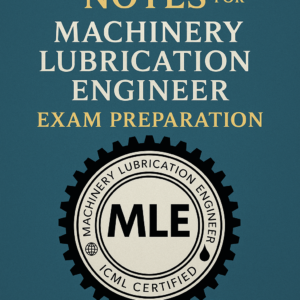Soft cover, perfect binding, Oil Analysis Condition Monitoring: An Introduction to Laboratory Operations and Management by Michael D. Holloway is a foundational guide for establishing and managing high-performance laboratories dedicated to in-service lubricant analysis. Bridging technical expertise with operational strategy, this comprehensive work equips lab managers, analysts, engineers, and quality professionals with the tools and frameworks needed to deliver accurate, reliable, and actionable oil condition data. Covering everything from sample intake and test methodology to instrumentation management, data integrity, and regulatory compliance, the book provides a complete roadmap to building and sustaining a world-class oil analysis facility.
Structured into practical chapters, the book addresses critical components such as sample handling, method validation, instrument calibration, staff training, quality control, audit readiness, and safety protocols. Advanced topics include Laboratory Information Management Systems (LIMS), automation strategies, artificial intelligence integration, predictive analytics, and digital transformation. Each section offers checklists, SOP guidance, cost considerations, and maintenance schedules to support both startup labs and those seeking continuous improvement or ISO/IEC 17025 accreditation.
With deep insight into tests like viscosity, TAN, TBN, FTIR, ferrography, and elemental spectroscopy, Holloway contextualizes how labs can generate precise data to detect wear, contamination, and degradation—core components of effective condition monitoring programs. The book also emphasizes the importance of secure data systems, traceable records, and standardized procedures in ensuring quality and client trust.
Whether building a new lab, modernizing an existing facility, or preparing for third-party certification, this volume serves as an indispensable manual. By integrating technical rigor with sound management principles, Oil Analysis Condition Monitoring offers a holistic approach to delivering high-integrity results that drive predictive maintenance and asset reliability across industrial sectors.
Delivery will require additional shipping costs and for addresses outside of the United States, international shipping costs vary based on destination, weight, and carrier service levels. Customers are responsible for any applicable customs duties or import taxes. Please note that international delivery may take 2 to 3 weeks, depending on local processing times and regional postal efficiency. Tracking information will be provided when available.
When making a purchase, select the US delivery or International in the resource section.




